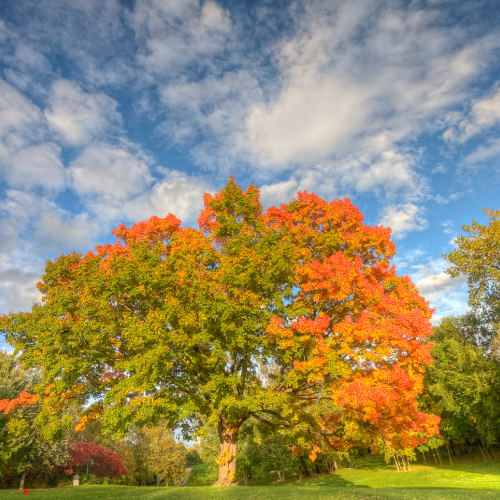Tree Information Blogs
Understanding Oak Wilt: How Tree Services Can Help Protect Your Oaks

Oak trees are a staple of many landscapes, providing shade, beauty, and a habitat for wildlife. However, these majestic trees are at risk from a deadly disease known as oak wilt. At Irvine's Tree Service LLC, we understand the importance of protecting your oak trees from this devastating condition. In this blog post, we’ll explore what oak wilt is, how to identify it, and how professional tree services can help safeguard your oaks.
What is Oak Wilt?
Oak wilt is a fungal disease caused by the pathogen Bretziella fagacearum. This aggressive disease affects oak trees, causing rapid decline and often death. It spreads through root grafts between trees and by insects that carry fungal spores from infected trees to healthy ones. The disease can affect all types of oak trees but is particularly lethal to red oaks, which can die within weeks of infection.
Identifying Oak Wilt
Early detection of oak wilt is crucial to prevent its spread. Here are some common signs and symptoms to look for:
Leaf Discoloration:
Leaves on infected trees often show a pattern of yellowing or browning starting from the edges and moving inward. This is especially noticeable in red oaks.
Wilting Leaves:
Leaves may wilt and drop prematurely, even in the summer months.
Vascular Discoloration:
Cutting into the bark of an infected tree may reveal brown or black streaks in the sapwood.
Rapid Decline:
Red oaks can die within weeks of infection, while white oaks might survive longer but still show symptoms of decline.
How Tree Services Can Help
Professional tree services play a critical role in managing and preventing oak wilt. Here’s how Irvine's Tree Service LLC can help protect your oaks:
Regular Inspections:
Our certified journeyman conduct regular inspections to identify early signs of oak wilt and other tree health issues. Early detection is key to managing the disease effectively.
Proper Pruning Techniques:
Improper pruning can create entry points for the oak wilt fungus. We use proper pruning techniques and timing (avoiding the spring and summer months when the disease is most active) to reduce the risk of infection.
Root Graft Disruption:
To prevent the spread of oak wilt through root grafts, we can sever root connections between infected and healthy trees using specialized equipment. This helps contain the disease and protect nearby oaks.
Fungicide Treatments:
In some cases, fungicide treatments can be applied to protect high-value trees from oak wilt. Our journeyman can assess the situation and recommend the best course of action.
Removal of Infected Trees:
Unfortunately, once a tree is infected with oak wilt, it cannot be cured. We provide safe and efficient removal of infected trees to prevent the spread of the disease to healthy oaks.
Public Education:
We believe in empowering our community with knowledge. Our team provides educational resources and guidance on how to prevent oak wilt, including the importance of avoiding pruning during high-risk periods and recognizing symptoms early.
Preventing Oak Wilt
Prevention is the best strategy when it comes to oak wilt. Here are some tips to help you protect your oak trees:
Avoid pruning oaks between April and October when the disease is most active.
Clean tools with a disinfectant after pruning or cutting oaks.
Avoid wounding oak trees, as this can provide entry points for the fungus.
Monitor your trees regularly for signs of oak wilt and contact a professional if you suspect an infection.
Conclusion
Oak wilt is a serious threat to oak trees, but with the right knowledge and professional tree services, it can be managed and prevented. At Irvine's Tree Service LLC, we are dedicated to preserving the health and beauty of your oaks. If you suspect oak wilt or need expert advice on tree care, contact us today. Together, we can protect your trees and maintain the integrity of your landscape.
The Best Time to Trim Maple Trees:

